
John Snetzler was an organ builder of Swiss origin, who worked mostly in England. Born in Schaffhausen in 1710, he trained with the firm of Egedacher in Passau and came to London about 1741. When he retired in 1781, his business continued and ended up with Thomas Elliot. Snetzler died in Schaffhausen on 28 September 1785.

St Saviour's Church is in Bidston Road, Oxton, Birkenhead, Merseyside, England. It is an active Anglican parish church in the deanery of Birkenhead, the archdeaconry of Chester, and the diocese of Chester. Its benefice is united with that of St Andrew, Noctorum. The church is recorded in the National Heritage List for England as a designated Grade II* listed building.

St Saviour's Church, on St Saviourgate in York, also known as St Saviour in the Marsh is a Grade II* listed former parish church in the Church of England in York.
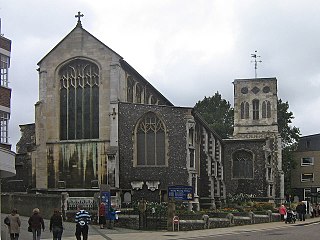
St Stephen's Church, Norwich is a Grade I listed parish church in the Church of England in Norwich.
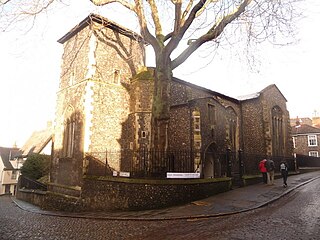
St Peter Hungate, Norwich is a Grade I listed redundant parish church in the Church of England in Norwich.

St Michael-at-Plea, Norwich is a Grade I listed redundant parish church in the Church of England in Norwich.

St Martin at Palace Plain, Norwich is a Grade I listed redundant parish church in the Church of England in Norwich.

St Martin at Oak, Norwich is a Grade I listed redundant parish church in the Church of England in Norwich.

St John the Theologian's Church, Norwich is a Grade I listed parish church first part of the Church of England, then a Greek Orthodox Church, and finally to be re-opened again for secular use, in Norwich. It was also known as St John Sepulchre.

St John the Baptist's Church, Timberhill, Norwich is a Grade I listed parish church in the Church of England in Ber Street, Norwich.
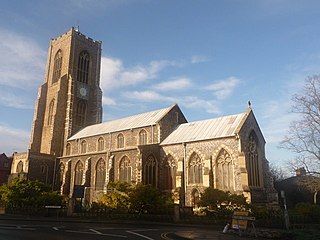
St Giles' Church, Norwich is a Grade I listed parish church in the Church of England in Norwich.

St George's Church, Tombland, Norwich is a Grade I listed parish church in Norwich.

St George's Church, Colegate, Norwich is a Grade I listed parish church in the Church of England in Norwich.
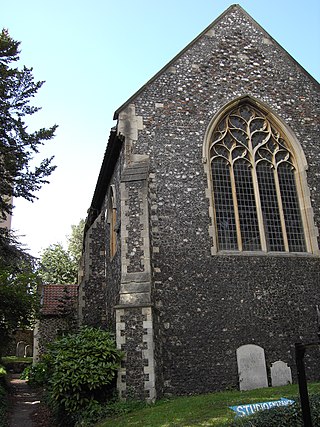
St Etheldreda's Church, Norwich is a Grade I listed redundant parish church in the Church of England in Norwich.
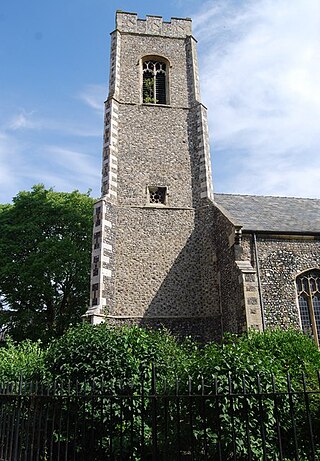
St Clement's Church, Norwich, also known as St Clement Colegate, is a Grade I listed redundant parish church in the Church of England in Norwich. It is dedicated to St Clement, a popular Danish saint and patron of seafarers.

St Helen's Church, Norwich is a Grade I listed parish church in the Church of England in Norwich.

St Mark's is a parish church in the Church of England in Washwood Heath, Birmingham.

St Saviour's Church, Saltley is a Grade II listed parish church in the Church of England in Birmingham.

Osbert Parsley was an English Renaissance composer and chorister. Few details of his life are known, but he evidently married in 1558, and lived for a period in the parish of St Saviour's Church, Norwich. A boy chorister at Norwich Cathedral, Parsley worked there throughout his musical career. He was first mentioned as a lay clerk, was appointed a "singing man" in c. 1534, and was probably the cathedral's unofficial organist for half a century. His career spanned the reigns of Henry VIII and all three of his children. After the Reformation of 1534, the lives of English church musicians changed according to the official policy of each monarch.
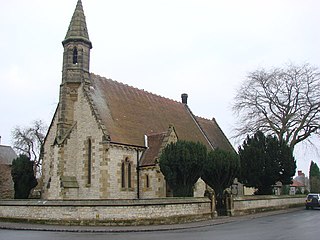
St Saviour's Church, Harome is a Grade II listed parish church in the Church of England in Harome, North Yorkshire.





















